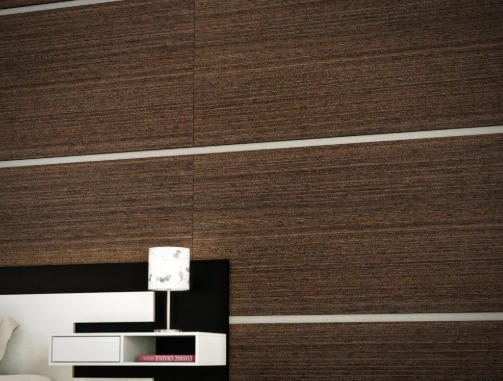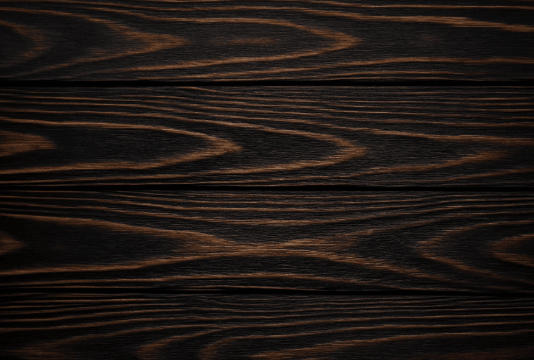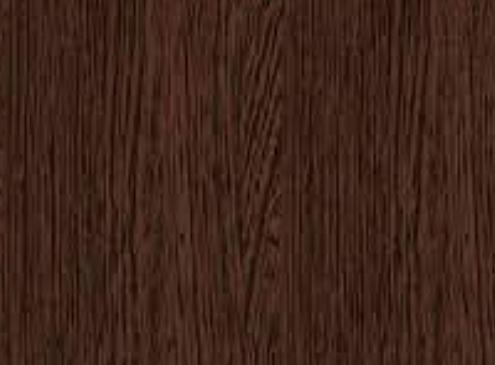










Content Menu
● Understanding Wenge Wood Characteristics
● Why People Choose to Paint Wenge Wood
● The Challenges of Painting Wenge Wood
● Preparing Wenge Wood for Painting
● Selecting the Right Paint for Wenge Wood
>> Paint Types
● Painting Process: Step-by-Step Technique
>> Step 1: Tools and Workspace Setup
>> Step 2: First Coat Application
● Advanced Decorative Techniques for Wenge Wood
● Alternative Finishing: When Paint Isn't Ideal
>> Staining
>> Bleaching
● Maintenance Tips After Painting
● Environmental and Safety Considerations
● Professional Tips for Flawless Results
● Troubleshooting Common Issues
● Long-Term Benefits of Painting Wenge Wood
● FAQs About Painting Wenge Wood
>> 1. Can Wenge wood hold paint well?
>> 2. What type of primer is best for Wenge?
>> 3. Can I use water-based paint on Wenge wood?
>> 4. How do I stop paint from peeling after curing?
>> 5. Is painting Wenge better than staining?
Wenge wood is one of the most luxurious and visually captivating hardwoods found in the furniture and interior design industries. Its deep chocolate tone, black streaks, and dense composition make it a preferred choice among craftsmen and decorators pursuing timeless elegance. Yet, when customization is needed, one question often arises: Can Wenge wood be painted?
The short answer is yes—but with careful preparation and technique. Wenge's dense and oily nature presents unique challenges, meaning standard painting approaches often lead to poor adhesion and uneven finishes. In this comprehensive guide, we delve into how to paint Wenge wood correctly, examining the preparation steps, painting processes, challenges, and finishing techniques professionals use to achieve perfect results.

Wenge wood (*Millettia laurentii*) originates from Central Africa and is prized for its exotic appearance and durability. Its natural depth and strength make it suitable for luxury cabinetry, flooring, and decorative furniture.
- Color: Rich, dark brown with subtle black veining.
- Grain Structure: Coarse and straight, allowing dramatic texture.
- Density: Highly durable, scoring approximately 1930 lb-ft on the Janka hardness scale.
- Oil Content: Contains natural extractives that hinder the adhesion of water-based finishes and paints.
- Natural Finish: Displays a satin-like sheen, even without polish.
These qualities make Wenge both desirable and difficult to finish. Its hardness and oily surface require special treatment before paint can properly bond.
Despite its striking natural tone, there are several reasons someone might want to paint Wenge furniture or panels:
- To match modern interior palettes such as white, black, or pastel tones.
- To restore or repurpose older furniture whose surface has dulled over time.
- For branding or commercial projects where uniform color themes are needed.
- To protect the wood with pigmented top coatings in humid environments.
Painting Wenge is not about hiding its beauty but adapting it to stylistic needs or reviving worn-out pieces for extended life and functionality.
Before attempting the process, it's crucial to understand the obstacles you'll likely face. The most common challenges include:
- Poor paint adhesion due to natural oils.
- Uneven paint coverage caused by coarse grain.
- Blotchiness or streaking when primers aren't fully compatible.
- Long drying times as dense hardwood slows solvent evaporation.
- Dark undertones showing through light paints, especially whites or creams.
Each issue has a solution—but only if preparation is done carefully before applying paint.
Surface preparation is the key to long-lasting, clean results. This process removes oils, evens out texture, and ensures primer bonds effectively.
Start by sanding thoroughly to eliminate the natural sheen and open the pores.
1. Begin with 120-grit sandpaper to remove finishes or lacquer.
2. Move to 180–220 grit for smoothing.
3. Always sand in the direction of the grain.
4. Wipe off sanding dust using a microfiber or tack cloth.
Sanding is essential because it roughens the surface enough for primer anchoring while avoiding scratches or swirl marks.
Wenge contains natural oils that can disrupt paint adhesion. Clean the surface thoroughly using mineral spirits or denatured alcohol. Avoid water-based cleaners, which may raise the grain or leave residue. Let it dry for at least several hours before moving on.
A primer acts as a bridge between the oily wood and the paint layer. Choose high-performance types:
- Shellac-based primer – ideal for sealing extractives and oils.
- Epoxy primer – provides maximum adhesion for dense surfaces.
- Oil-based primer – suitable for furniture and cabinets.
Apply two thin coats, allowing drying in between. Lightly sand after each coat to enhance smoothness. This will ensure the final paint layer achieves uniform coverage and durability.
- Oil-based enamel: Proven longevity and strong adhesion; excellent for furniture pieces.
- Lacquer or polyurethane paint systems: For glossy or mirrored finishes.
- Acrylic latex paint: Acceptable choice if paired with appropriate primer and sealer.
Oil-based options tend to yield the most consistent and resistant results on Wenge wood.
Decide what finish suits your space:
- Matte finish: Modern and understated look.
- Semi-gloss: Balanced reflectivity, ideal for furniture.
- High-gloss: Luxury-style appearance that amplifies reflection and smoothness.
Every finish demands accurate application of sealing coats to maintain its appeal over time.

Prepare a clean, ventilated work area with appropriate lighting and stable temperature. Have ready brushes, foam rollers, paint sprayers, sanding blocks, and lint-free cloths.
Apply paint in thin, even layers using a foam brush or sprayer. Avoid thick applications that can lead to bubbling or uneven drying.
Let the first layer cure for 18–24 hours. Lightly sand with 220-grit paper to ensure adhesion for the next layer.
Apply two to three more coats depending on desired opacity. Always allow full drying between coats to prevent tackiness or color inconsistency.
Finish with a clear varnish or polyurethane topcoat. This step protects against scratching, moisture, and fading from sunlight.
You can enhance painted Wenge surfaces using creative techniques:
- Color wash: Lightly apply diluted paint to allow grain visibility.
- Distressed finish: Sand corners and edges for vintage effect.
- Metallic glazing: Add subtle gleam for contemporary decor.
- Dual-color layering: Combine muted and bold tones for artistic appeal.
These styling approaches balance Wenge's natural elegance with modern customization.
Not everyone prefers a fully opaque painted look. Wenge's intense grain lends itself beautifully to other treatments.
Using gel stains or oil-based dyes reinforces the wood's natural beauty and enhances depth without fully obscuring its character.
For light interiors, bleaching can reduce the dark tone, creating a driftwood or ash-like look—perfect for minimalist spaces.
Finishes like Danish oil, tung oil, or polyurethane accentuate grain definition and create a durable, lustrous guard against wear.
Maintaining painted Wenge wood requires care similar to fine furniture preservation.
- Clean gently using a soft cloth; avoid abrasives.
- Reapply clear sealer every 3–5 years for longevity.
- Keep away from direct sunlight or intense humidity.
- Use coasters, pads, and protective mats to shield surfaces.
- Dust regularly to maintain sheen and prevent dull buildup.
Proper upkeep ensures your paint finish retains brilliance and structural integrity for decades.
- Always wear gloves, safety glasses, and a respirator when applying solvents or spray paints.
- Dispose of used materials responsibly to prevent harmful chemical release.
- Choose low-VOC paints and sealers to reduce environmental impact.
- Maintain sufficient ventilation during application and curing processes.
Sustainably finishing Wenge wood safeguards both your health and the planet.
- Test primer compatibility first. A patch test prevents adhesion failures later.
- Avoid heavy coats. Thin applications build better durability and smoother texture.
- Monitor humidity. Excess moisture slows curing and causes milky finishes.
- Maintain temperature stability. Extreme heat or cold may cause surface cracking.
- Invest in high-grade brushes and sprayers. They deliver professional precision and minimize streaks.
Following these techniques transforms your Wenge surface from natural rawness into a smooth, high-end finish worthy of designer spaces.
Several interior brands and workshops have demonstrated how painted Wenge can elevate design aesthetics:
- Modern minimalist cabinets using matte white paint contrast beautifully against black granite countertops.
- Contemporary bedroom furniture with color-blocked finishes blending natural wood tones and pastel paints.
- Commercial spaces employing painted Wenge panels as accent walls, offering sleek luxury with minimal upkeep.
These examples highlight the wood's adaptability across various design environments—from classic to avant-garde.
Even after following best practices, some challenges may still occur:
- Peeling paint: Insufficient primer sealing or poor surface cleaning.
- Sticky finish: Incomplete curing under low temperatures.
- Uneven sheen: Inconsistent topcoat coverage or improper sanding.
- Visible brush marks: Use foam rollers or sprayers for smoother layers.
- Cracking topcoat: Excessive paint thickness or incompatible sealers.
Resolving these issues promptly ensures your painted Wenge remains elegant and durable.
Painting Wenge is not just about aesthetic transformation—it offers tangible functional advantages:
- Enhanced protection against moisture and UV damage.
- Customization flexibility for interior designers and homeowners.
- Extended furniture lifespan through sealed surfaces.
- Ease of cleaning and maintenance compared to untreated finishes.
By committing to precision and patience, the painting process becomes a sustainable method to both preserve and personalize this exotic hardwood.
Wenge wood, while naturally stunning, can absolutely be painted if approached correctly. With thorough sanding, careful cleaning, and proper primer selection, paint adheres beautifully to this dense and oily surface. Whether aiming for a muted matte, glossy luxury look, or artistic design finish, Wenge offers a reliable foundation for creativity.
Patience and attention to detail are crucial at every step—from surface preparation to topcoat sealing. When done right, painted Wenge transforms into refined furniture pieces or architectural elements that combine elegance and resilience. So yes, Wenge wood can be painted—and with the right techniques, it can become a timeless statement of craftsmanship and style.

Yes, once properly sanded and primed. Its natural oils need to be sealed with shellac-based or epoxy primers to ensure solid adhesion.
A high-bonding shellac or epoxy primer works best, as these formulas resist oil interference and provide long-lasting durability.
Water-based paints can be used, but they must be paired with appropriate sealing topcoats to maintain proper adherence and prevent peeling.
Proper degreasing, thin coat layering, full drying time, and protective clear coating ensure paint longevity and prevent peeling or bubbling.
Both have merits. Painting hides grain and matches any decor scheme, while staining preserves the natural pattern and depth. The choice depends on your aesthetic goals.